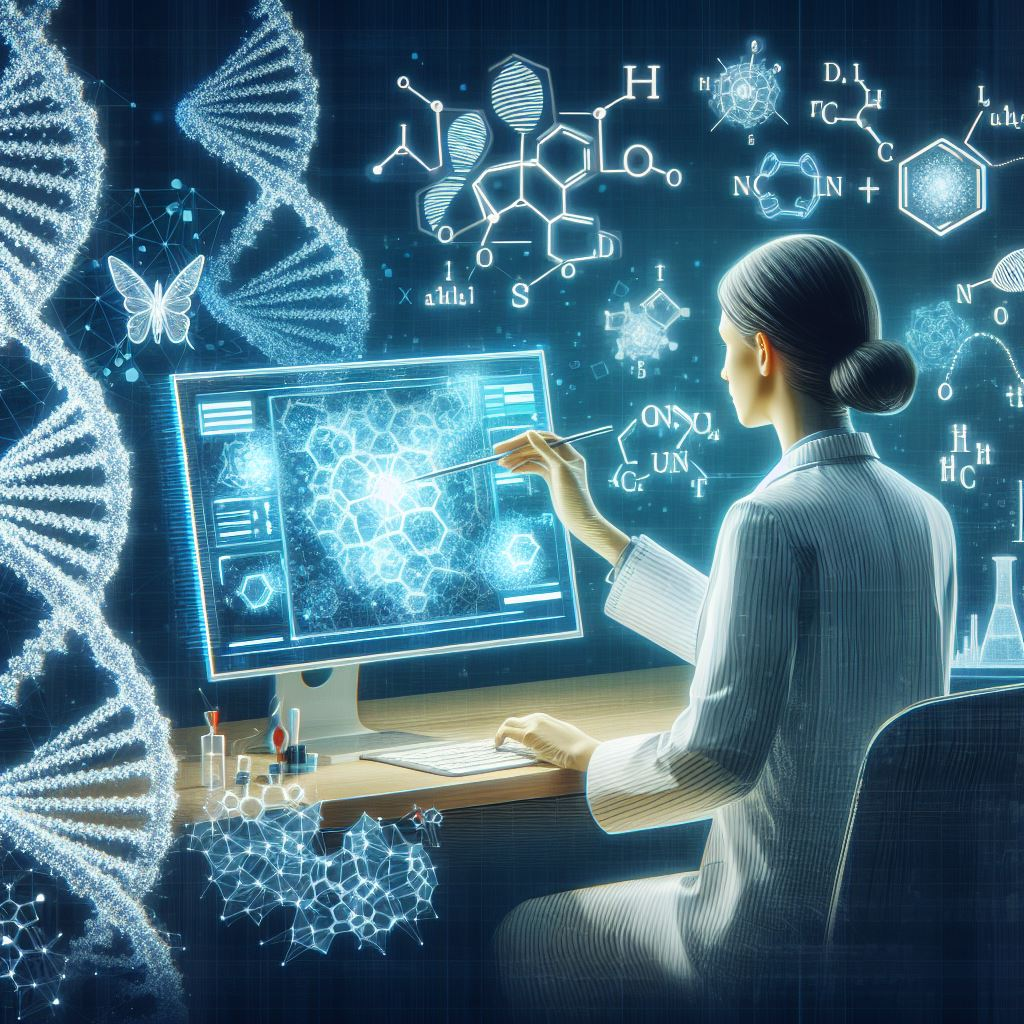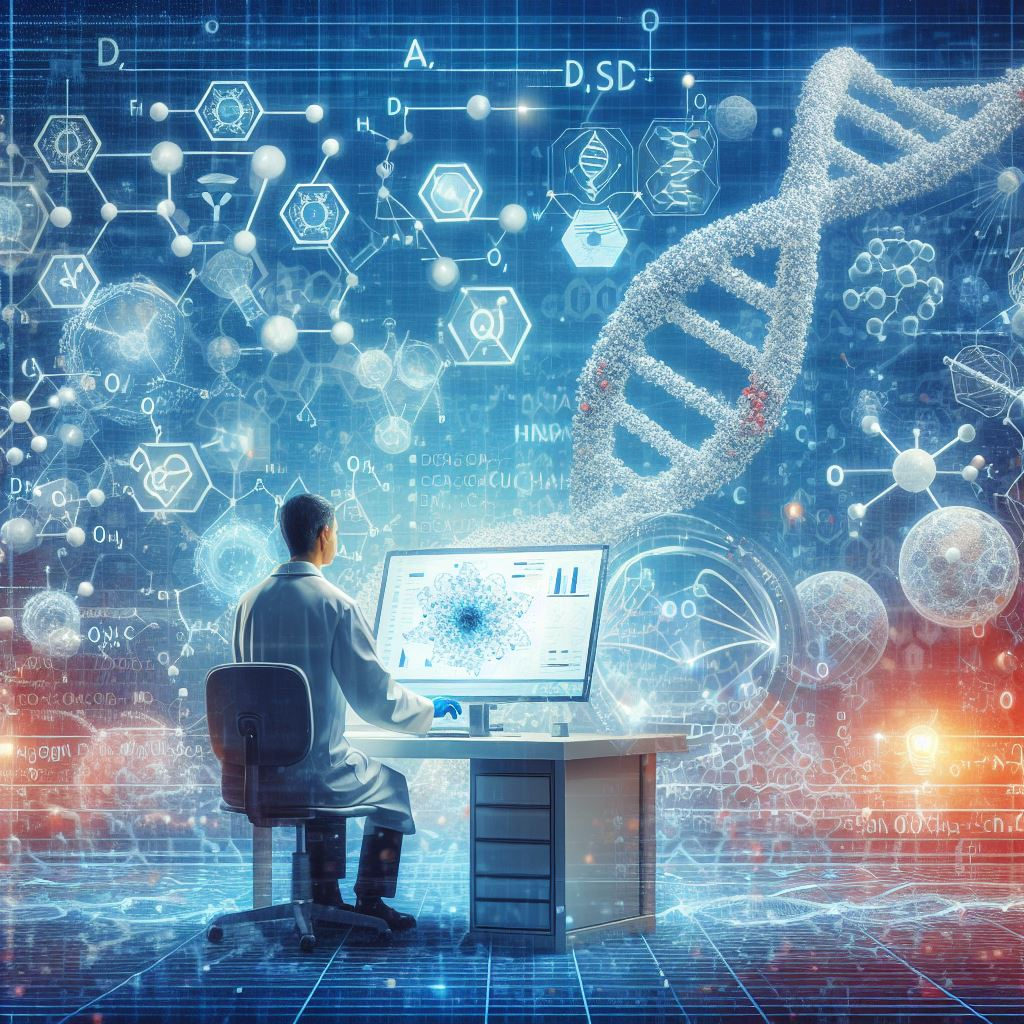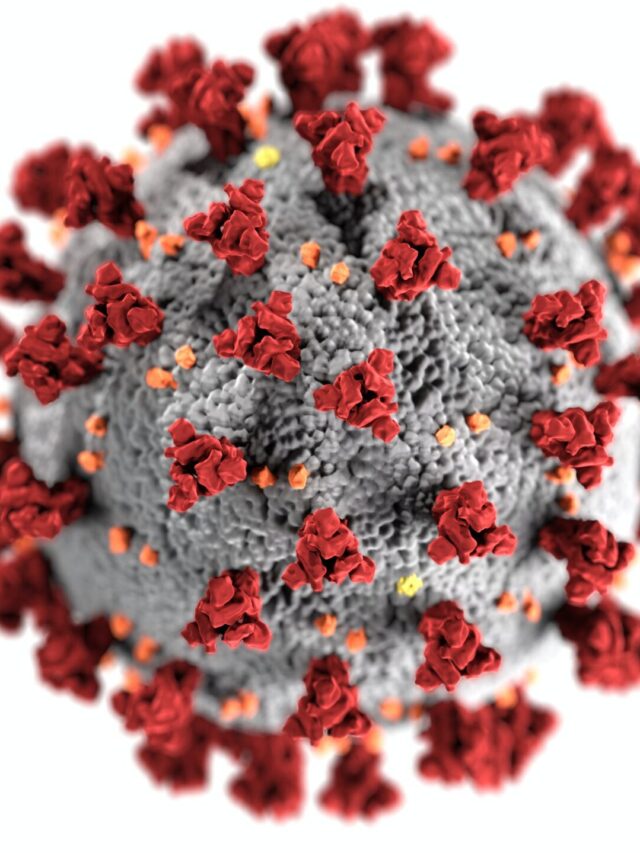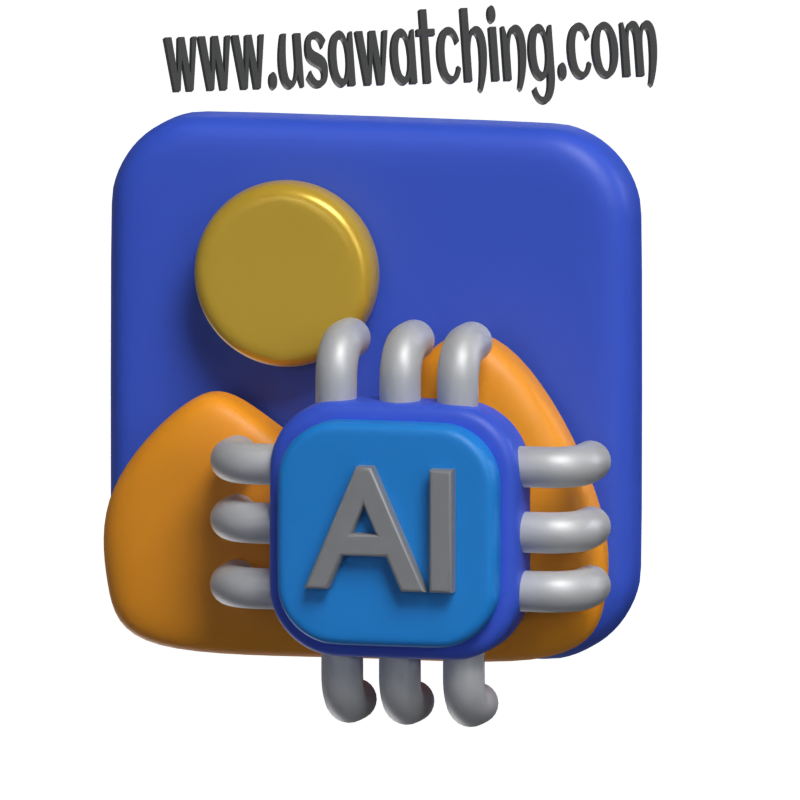Unveiling the Nexus: Generative AI’s Revolutionary Role in Drug Discovery
A. Setting the Stage: The Quest for Breakthroughs in Drug Discovery The journey of drug discovery has been a relentless pursuit, fueled by the insatiable quest for groundbreaking treatments and cures. For decades, researchers have navigated the intricate complexities of molecular interactions, tirelessly sifting through billions of potential compounds in search of that elusive golden needle – a molecule that could alleviate suffering and save countless lives.


B. Enter Generative AI: A Game-Changer in Pharmaceutical Innovation
In this arduous quest, a revolutionary force has emerged, one that promises to redefine the very fabric of drug discovery. Generative Artificial Intelligence (AI), a cutting-edge technology that harnesses the power of advanced algorithms and vast data repositories, is poised to shatter long-standing barriers and propel the pharmaceutical industry into a new era of unprecedented innovation.
Understanding Generative AI:
A. Decoding Generative Adversarial Networks (GANs)
At the heart of this transformative paradigm lie Generative Adversarial Networks (GANs), a sophisticated class of machine learning models that engage in an intricate dance of creation and discernment. These models comprise two neural networks – a generator and a discriminator – locked in a perpetual competition, each striving to outmaneuver the other. The generator’s task is to create synthetic data that mimics the real-world distribution, while the discriminator’s role is to distinguish between the generated and authentic data. Through this adversarial process, the models iteratively refine their capabilities, ultimately yielding highly realistic and novel outputs.
B. Unraveling the Magic of Reinforcement Learning in AI
Complementing the prowess of GANs is the realm of reinforcement learning, a paradigm that empowers AI systems to learn through trial and error, much like how humans acquire skills. By navigating a virtual environment, making decisions, and receiving feedback in the form of rewards or penalties, these AI agents hone their decision-making abilities, continuously adapting and optimizing their strategies to achieve the desired outcome.
C. The Power of Generative Models: Creating Something from Nothing
Generative models, the cornerstones of Generative AI, possess the remarkable ability to create novel data – be it images, text, or molecular structures – from scratch. By learning the underlying patterns and distributions of existing data, these models can extrapolate and generate entirely new instances that adhere to the learned characteristics, while introducing innovative variations. This capacity to generate original content is what sets Generative AI apart, making it a game-changer in domains where creativity and novelty are paramount, such as drug discovery.
The Marriage of Generative AI and Drug Discovery:
A. Breaking Down Traditional Drug Development Paradigms
For years, the drug development process has been mired in a labyrinth of challenges – from the astronomical costs associated with screening and testing millions of compounds to the lengthy timelines that span over a decade from initial discovery to market approval. Generative AI promises to disrupt this traditional paradigm, ushering in a new era of accelerated innovation and heightened efficiency.
B. Accelerating Drug Candidate Identification: From Years to Minutes
One of the most transformative aspects of Generative AI in drug discovery lies in its ability to rapidly identify and generate promising drug candidates. By leveraging the power of generative models and reinforcement learning, AI systems can explore the vast chemical space, rapidly synthesizing and evaluating millions of potential molecules in a matter of minutes – a feat that would have taken years for human researchers to accomplish.
C. Navigating the Complex Landscape of Molecular Design with AI
Molecular design is a intricate puzzle, where the slightest alteration in a compound’s structure can profoundly impact its efficacy, selectivity, and safety profile. Generative AI excels in this domain, harnessing its ability to learn and extrapolate from existing molecular data, enabling researchers to navigate the intricate landscape of molecular design with unprecedented precision and efficiency.


Applications of Generative AI in Drug Discovery:
A. Target Identification and Validation: Finding the Needle in the Haystack
One of the most critical steps in drug discovery is identifying and validating potential therapeutic targets – the molecular entities implicated in specific diseases or conditions. Generative AI models, armed with vast repositories of biological data and advanced pattern recognition capabilities, can sift through this haystack of information, pinpointing promising targets with remarkable accuracy and speed.
B. Hit Generation and Lead Optimization: Transforming the Drug Development Pipeline
Once a target has been identified, the next challenge lies in generating and optimizing lead compounds – the molecular candidates that exhibit desirable pharmacological properties. Generative AI models can generate vast libraries of novel compounds tailored to specific targets, while reinforcement learning techniques enable the iterative optimization of these leads, fine-tuning their properties to enhance potency, selectivity, and bioavailability.
C. Predictive Modeling: Anticipating Drug Efficacy and Toxicity with Precision
The path from lead compound to approved drug is fraught with uncertainties, as researchers must navigate the intricate web of pharmacokinetics, pharmacodynamics, and potential toxicities. Generative AI models, trained on vast datasets of drug behavior and molecular interactions, can accurately predict a compound’s efficacy, absorption, distribution, metabolism, and excretion (ADME) properties, as well as potential adverse effects, mitigating risks and streamlining the development process.


Case Studies: Real-World Success Stories:
A. Revolutionizing Drug Design: Case Study 1
In a groundbreaking collaboration between researchers at MIT and a leading pharmaceutical company, Generative AI models were employed to design novel inhibitors for a specific enzyme implicated in a rare genetic disorder. By harnessing the power of GANs and reinforcement learning, the team generated and optimized a promising lead compound in a matter of months – a process that would have taken years using traditional methods.
B. From Concept to Clinical Trials: Case Study 2
A startup company leveraging Generative AI technology has made remarkable strides in developing a novel class of antibiotics to combat the growing threat of antibiotic resistance. By training their AI models on vast datasets of existing antibiotics and bacterial genomic data, the team has generated and optimized a promising lead compound that is currently undergoing clinical trials, offering hope in the fight against this global health crisis.
C. Saving Lives and Shaping the Future: Case Study 3
In a collaborative effort between academia and industry, researchers have employed Generative AI to design and optimize novel cancer therapeutics. By integrating multiple AI models, each specializing in different aspects of drug discovery, the team has successfully identified and advanced a promising lead compound that selectively targets cancer cells while minimizing toxicity to healthy tissues – a breakthrough that could potentially save countless lives.
Overcoming Challenges and Ethical Considerations:
A. Addressing Bias and Limitations in AI Algorithms
While the potential of Generative AI in drug discovery is undeniable, it is crucial to address the inherent biases and limitations that can arise from the algorithms and training data used. Ensuring that the AI models are trained on diverse and representative datasets, and implementing rigorous testing and validation processes, is essential to mitigating biases and ensuring the reliability and generalizability of the generated outputs.
B. Ensuring Transparency and Accountability in AI-Driven Drug Discovery
As AI systems become increasingly integrated into the drug discovery process, it is imperative to establish transparency and accountability frameworks. Clear documentation of the AI models, their training data, and decision-making processes is crucial, enabling researchers, regulatory bodies, and the public to understand and scrutinize the AI-driven discoveries and decisions.
C. Ethical Implications: Balancing Innovation with Patient Safety and Privacy
The integration of Generative AI into drug discovery also raises ethical considerations that must be carefully navigated. While the potential for accelerated innovation and life-saving treatments is immense, it is imperative to strike a delicate balance between rapid progress and ensuring patient safety and privacy. Robust ethical guidelines, informed consent processes, and rigorous clinical testing protocols must be implemented to safeguard the well-being of patients and maintain public trust in these groundbreaking technologies.
The Future Landscape: Beyond Boundaries:
A. From Drug Discovery to Personalized Medicine: The Next Frontier
The transformative potential of Generative AI extends far beyond the realm of drug discovery alone. As this technology matures and integrates with other emerging fields, such as genomics, proteomics, and individual patient data, we stand on the precipice of a new era of personalized medicine. Imagine a future where AI systems can design tailored therapies based on an individual’s unique genetic profile, medical history, and environmental factors – a future where one-size-fits-all treatments are replaced by precision-engineered solutions.
B. Collaborative Efforts: Bridging the Gap Between AI and Human Expertise
While the power of Generative AI is undeniable, it is essential to recognize that this technology is not a replacement for human expertise but rather a powerful tool to augment and enhance our capabilities. The true potential of AI in drug discovery lies in fostering collaborative efforts between AI systems and human researchers, where the strengths of each are leveraged to overcome complex challenges and unlock new frontiers.
C. Embracing a New Era of Healthcare: Empowering Patients and Physicians
As Generative AI revolutionizes drug discovery and personalized medicine, it also holds the promise of empowering patients and healthcare professionals alike. Imagine a future where patients have access to personalized treatment plans, tailored to their unique needs, and where physicians are armed with AI-driven insights and predictive models to make more informed decisions, ultimately leading to better outcomes and improved quality of life.
Conclusion:
A. Reflecting on the Transformative Potential of Generative AI in Drug Discovery
As we stand at the precipice of this technological revolution, it is impossible to ignore the profound impact that Generative AI is poised to have on the field of drug discovery. From accelerating the identification of promising drug candidates to optimizing molecular designs and predicting efficacy and toxicity, this technology is shattering long-standing barriers and paving the way for a future where life-saving treatments are developed with unprecedented speed and precision.
B. Charting a Course Towards a Brighter, Healthier Future
However, it is crucial to approach this paradigm shift with a balanced perspective, acknowledging both the immense potential and the ethical considerations that must be addressed. By fostering interdisciplinary collaborations, prioritizing transparency and accountability, and ensuring patient safety and privacy, we can chart a course towards a brighter, healthier future – one where the power of Generative AI is harnessed for the greater good of humanity.
C. Invitation to Join the Journey: Embracing Innovation, Inspiring Change
As an MIT professor with over four decades of experience in this field, I invite you to join me on this extraordinary journey – a journey where the boundaries of possibility are continuously pushed, where innovation is embraced, and where the collective efforts of researchers, scientists, and visionaries inspire lasting change. Together, we can unleash the full potential of Generative AI, ushering in a new era of groundbreaking discoveries and life-changing treatments that will resonate across generations.










